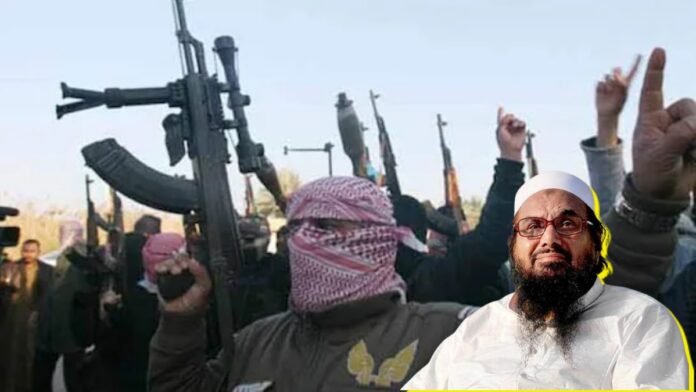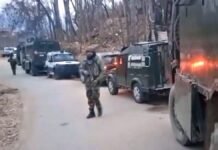
Key Points
- Lashkar-e-Taiba (LeT), one of the world’s most active terror groups, orchestrated the deadly Pahalgam attack with direct support from Pakistan’s ISI and Army.
- The organization is led by Hafiz Mohammad Saeed, with his son Talha Saeed rising rapidly in rank and influence.
- LeT’s operations are run by a core group of hardened militants, including 26/11 mastermind Zaki-ur-Rehman Lakhvi, global recruiter Sajid Mir, and financial chief Haji Mohammad Ashraf.
- LeT uses charitable and political fronts like Jamaat-ud-Dawa and Falah-e-Insaniyat Foundation to mask its terror funding, with money flowing from hawala networks and even international aid.
- Pakistani training camps, often protected by the military, prepare both local and foreign recruits for attacks in India and beyond.
New Delhi: The recent Pahalgam massacre, which killed 26 people, has reignited debate on how terrorist organizations like Lashkar-e-Taiba (LeT) operate, recruit, and finance their deadly missions. Investigations by Indian agencies and international observers have revealed a sophisticated ecosystem of leadership, training, and funding-much of it rooted in Pakistan and shielded by its intelligence agencies.
Leadership: The Faces Behind Lashkar-e-Taiba
- Hafiz Mohammad Saeed: Founder and ideological leader, designated a global terrorist by the US and UN. He remains the public face of LeT and its charitable front, Jamaat-ud-Dawa.
- Talha Saeed: Hafiz Saeed’s son, now a senior LeT leader and head of its cleric wing. Talha is actively involved in recruitment, fundraising, and operational planning, and has been declared a designated terrorist by India’s Ministry of Home Affairs.
- Zaki-ur-Rehman Lakhvi: Co-founder and military chief, mastermind of the 2008 Mumbai attacks. Lakhvi oversees LeT’s military operations and training camps, and has orchestrated attacks across South Asia and beyond.
- Sajid Mir (alias Saifullah Sajid Jatt): LeT’s international operations manager and principal planner of the 26/11 Mumbai attacks. He is on the FBI’s Most Wanted list and is believed to reside in Pakistan, continuing to recruit and direct global terror cells.
- Mohammad Yahya Mujahid: Media head and chief propagandist, responsible for LeT’s messaging and radicalization campaigns.
- Haji Mohammad Ashraf: Financial chief, runs LeT’s funding networks through donations, hawala, and fronts like Jamaat-ud-Dawa and Falah-e-Insaniyat Foundation.
- Arif Kasmani: Handles LeT’s coordination with other terrorist groups, including Al-Qaeda, and manages international terror alliances.
- Zafar Iqbal: Co-founder, expert in ideological indoctrination and radicalization, masterminding recruitment and training.
Training Camps: Pakistan’s Open Secret
LeT’s training infrastructure is extensive and well-protected. Camps like Markaz-e-Taiba near Lahore and the Jangal Mangal Camp in Pakistan-occupied Kashmir (PoK) provide religious indoctrination, weapons training, and even specialized skills like paragliding[1][10]. These camps are reportedly tolerated and sometimes directly supported by Pakistan’s Inter-Services Intelligence (ISI) and, historically, even the regular army.
Satellite imagery and intelligence confirm that these camps host meetings between LeT commanders and ISI officials, with facilities for both local and foreign recruits. The camps are used to prepare militants for infiltration into India and for attacks abroad.
Operational Tactics: Local and Global Reach
LeT’s operations are meticulously planned, often with direct ISI involvement. The Pahalgam attack, for example, was orchestrated by Pakistani nationals Hashmi Musa (alias Suleman) and Ali Bhai (alias Talha Bhai), who maintained constant communication with handlers across the border. Local “overground workers” (OGWs) in Kashmir provide logistics, shelter, and reconnaissance, making the attacks possible.
Adil Ahmed Thoker, a local Kashmiri who traveled to Pakistan on a student visa, is a recent example of how LeT recruits and trains operatives to return and execute attacks in India.
Front Organizations: The Charitable Facade
To evade scrutiny and sanctions, LeT operates through a network of charitable and political fronts:
- Jamaat-ud-Dawa (JuD): LeT’s main charitable front, running schools, hospitals, and relief camps. Banned by the US and UN, but still active under various aliases.
- Falah-e-Insaniyat Foundation (FIF): Another front, involved in fundraising and logistics. Shockingly, it received international aid, including funds from USAID via intermediary charities, despite being banned by the US government.
- Milli Muslim League: LeT’s political wing, attempting to gain legitimacy and influence in Pakistan’s political system.
Funding: The Lifeblood of Terror
LeT’s funding comes from a complex web:
- Donations and Hawala: Money is channeled through hawala networks stretching across South Asia, including India, Bangladesh, Nepal, and Sri Lanka. Jamaat-e-Islami’s networks play a key role.
- ISI and State Support: Pakistan’s ISI provides direct financial and logistical backing for operations targeting India and Afghanistan.
- International Aid: Investigations have revealed that even international aid, such as US taxpayer money routed through USAID and other NGOs, has inadvertently funded LeT’s operations via its charity fronts.
Conclusion: A Persistent Global Threat
The Pahalgam attack is a stark reminder of Lashkar-e-Taiba’s enduring capabilities and the state-backed infrastructure that sustains it. Despite international bans and pressure, LeT continues to evolve, using a mix of militant operations, charitable fronts, and political maneuvering to spread its influence and fund its terror agenda-posing a persistent threat to India and the world.




















































